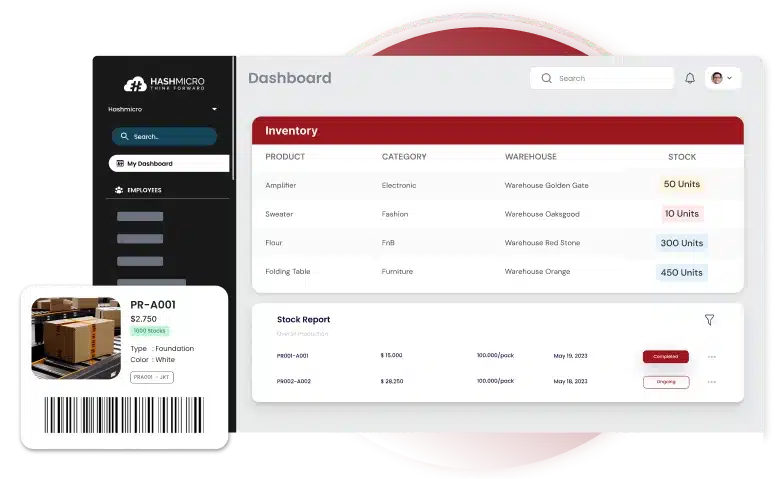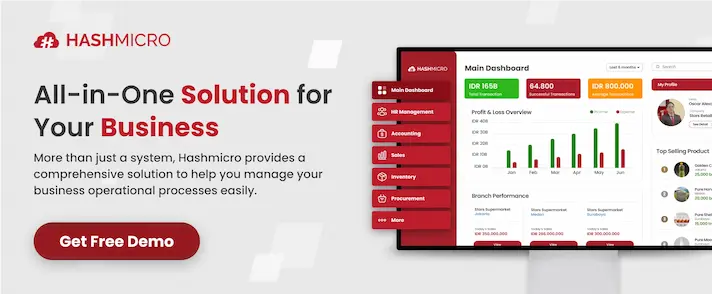Warehouse monitoring is often the unsung hero in keeping operations running smoothly. Imagine a bustling warehouse where orders pile up, stock goes missing, and the team scrambles to make sense of it all.
Without a system in place to track everything, small issues quickly spiral into big, costly problems. When you’re managing hundreds of SKUs, juggling order fulfillment, and trying to keep safety standards high, it’s easy for things to slip through the cracks.
But imagine if you could know exactly where every item was, prevent stockouts, and organize your warehouse in a way that makes picking faster and safer. That’s where warehouse monitoring comes in.
In this article, we’ll explore the benefits of robust monitoring systems and how they can transform your warehouse operations for the better.
Key Takeaways
|
What is Warehouse Monitoring?
Warehouse monitoring is the practice of overseeing and managing various aspects of a warehouse to enhance efficiency, security, and productivity.
This process involves observing, measuring, and tracking the conditions, materials, and activities within the warehouse using advanced technologies like surveillance cameras, sensors, and IoT devices.
These tools collect and interpret data, enabling workers to make informed decisions based on real-time insights.
Brands implement warehouse monitoring systems to manage critical elements such as:
- Assets: Ensuring all equipment and machinery are operating optimally.
- Inventory: Keeping track of stock levels to prevent overstocking or stockouts.
- Environment: Monitoring conditions like temperature and humidity to protect sensitive goods.
- Energy: Optimizing energy use to improve efficiency and reduce costs.
- Problems: Quickly identifying and resolving issues to maintain smooth operations.
As warehouses have become more complex, so has the technology used to monitor them. Instead of requiring workers to spend hours manually checking and recording data, conditions, and activities, brands can now use automation for many warehousing monitoring tasks.
Benefits of Warehouse Monitoring
![]()
Effective warehouse monitoring offers significant advantages for businesses aiming to improve operations. From reducing costs to enhancing efficiency, the right system transforms how your warehouse functions. Below are some key benefits you can expect from implementing warehouse monitoring.
1. Cost savings
McKinsey’s survey highlights that companies focusing on supply chain resilience and adopting advanced warehouse monitoring strategies can achieve substantial cost savings.
With predictive maintenance systems, warehouses can monitor equipment performance in real-time and only perform maintenance when needed.
Additionally, inventory tracking systems can optimize stock levels, reducing overstocking and minimizing the need for costly last-minute replenishments. Effective monitoring also lowers the risk of theft, spoilage, or stock obsolescence, all of which contribute to overall cost reductions.
2. Reduced errors
Implementing connected technologies in warehouse operations significantly reduces labor costs while improving quality control. This is primarily due to the reduction of manual intervention, which minimizes human errors in inventory management and order fulfillment.
For example, utilizing RFID tags and automated scanning systems reduces the chances of miscounting or incorrect item picking. Additionally, AI-driven monitoring tools can detect discrepancies in inventory levels in real-time for swift corrective action before companies have to rework.
3. Faster fulfillment
According to a Boston Consulting Group (BCG) study, companies that adopt advanced analytics and real-time monitoring for supply chain visibility see a 4% to 6% improvement in demand fulfillment.
These systems allow for the immediate identification of stock shortages or bottlenecks in order processing, which accelerates decision-making. For instance, real-time data from IoT sensors can track the exact location of items within the warehouse, enabling faster retrieval and reducing picking times.
With predictive analytics, warehouses can also anticipate high-demand periods and pre-arrange resources to meet spikes in orders, improving order accuracy and delivery times.
4. Improved safety
Deloitte’s research reveals that 78% of employers use remote monitoring tools to track employee activities and environmental conditions, leading to enhanced workplace safety.
Warehouse monitoring systems can track equipment status and detect potential hazards such as machinery malfunctions or unsafe temperature fluctuations. For example, IoT sensors can monitor air quality and temperature in real-time.
It will trigger alerts if conditions become unsafe for workers or sensitive inventory. Additionally, real-time video surveillance can detect security breaches or unsafe practices, which leads to immediate interventions.
5. Increased productivity
By integrating IoT sensors, automated guided vehicles (AGVs), barcode tracking software, and robotics, warehouses can optimize workflows and reduce operational downtime. Warehouse monitoring systems continuously assess operational efficiency.
For instance, data from AGVs can reveal underutilized paths in the warehouse, prompting layout changes that reduce travel time between picking stations. Furthermore, AI-powered monitoring systems can automatically adjust staffing levels based on demand forecasts.
Key Components of Warehouse Monitoring

To fully understand warehouse monitoring, it’s important to know the core technologies that drive it. These tools enhance efficiency, safety, and overall operations by providing real-time insights. Below are the key components essential for effective warehouse monitoring.
1. IoT devices
The Internet of Things (IoT) refers to a network where multiple devices and objects are connected to share data. IoT devices, like RFID tags and sensors, collect information on inventory, warehouse locations, storage conditions, and even how goods are handled.
2. RFID tags
Radio Frequency Identification (RFID) tags are scannable labels that use radio waves to track objects. Workers can scan items as they move through the warehouse, and this data is automatically sent to the warehouse management system, providing real-time visibility into inventory location and status.
3. Sensors
Wireless sensors positioned throughout the warehouse allow remote monitoring of various conditions and activities. Light, temperature, and humidity (LTH) sensors help maintain optimal storage conditions, crucial for cold storage facilities. Other sensors detect smoke, track movement, and monitor air quality in environments where it’s critical.
4. Alarm systems
In large warehouses, detecting issues can be a challenge. Alarm systems provide instant alerts for temperature changes, unusual movement, glass breaks, or other incidents, helping prevent theft, damage, or other costly problems.
5. Surveillance cameras
High-tech IP cameras with HD capabilities play a key role in warehouse monitoring. These advanced cameras can detect motion, read text, and even identify heat. AI-powered surveillance systems streamline the process by tracking inventory, locating lost shipments, and more.
6. Centralized communication systems
Seamless communication is crucial for effective warehouse monitoring. Centralized systems, such as wireless or wired intercoms, enable managers and workers to communicate easily across departments and locations without the need for physical travel.
7. Centralized software solutions
Centralized software solutions, like warehouse management software (WMS) or unified IoT platforms, consolidate data from multiple systems into a single dashboard. With all the information in one place, you can easily monitor stock levels, track inventory movements, and manage order fulfillment without navigating multiple platforms.
Best Practices for Warehouse Management
To fully capitalize on the advantages of warehouse monitoring, businesses should implement the following best practices:
- Conduct Regular Audits: Frequent audits are key to verifying that monitoring systems are working properly and collecting accurate data. These checks also help spot potential problems early, preventing them from escalating into major issues.
- Provide Employee Training: Effective training ensures employees know how to operate warehouse monitoring systems efficiently. This training should cover both the technical functions and the importance of accurate data entry and reporting.
- Leverage Real-Time Data: Using real-time data is essential for informed decision-making. Make sure your monitoring systems deliver up-to-date information that is readily accessible to all relevant team members.
- Ensure System Integration: Integrating systems like WMS, ERP, and CRM fosters a smooth exchange of information across the organization. This connectivity enhances decision-making and streamlines operations.
- Maintain Monitoring Equipment: Regular upkeep of equipment like RFID scanners and surveillance cameras is crucial for reliable performance. Preventive maintenance reduces the risk of unexpected breakdowns and expensive repairs.
- Review and Update Policies: Warehouse monitoring policies should be periodically reviewed and revised to align with evolving technologies and business needs. This includes updating security measures, inventory procedures, and compliance standards.
Things to Consider Before Choosing a Warehouse Monitoring System

Selecting the right warehouse monitoring system requires careful evaluation of various factors. Each warehouse has unique needs, so it’s important to address specific requirements. Here are the key things to consider before making your decision.
1. Warehouse location
The location of your warehouse plays a significant role in determining the type of security systems you need. Warehouses in remote or industrial areas often face a higher risk of theft and unauthorized access.
To safeguard your assets, consider advanced surveillance systems with real-time alerts, motion detection, and remote monitoring capabilities. Additionally, ensure your system can handle any environmental challenges specific to your location, such as harsh weather conditions or unreliable internet connectivity.
2. Type and volume of inventory
Different types of inventory require specialized monitoring. For example, perishable goods like food and pharmaceuticals may need temperature and humidity sensors, while high-value items might require more robust security measures.
Additionally, the sheer volume of stock (number of SKUs) influences the complexity of your monitoring system. Large warehouses with varied inventory benefit from real-time tracking solutions like RFID tags and barcode systems to prevent errors and streamline operations.
3. Level of automation
The amount of automation in your warehouse will dictate the kind of monitoring system you need.
Highly automated warehouses, using technologies like automated guided vehicles (AGVs) or robotic pickers, require systems that can integrate with these machines to track performance and detect malfunctions.
Less automated warehouses may need simpler systems but still benefit from automation-ready solutions that allow for future upgrades as your operations evolve.
4. Multiple warehouses or sites
Managing multiple warehouses in different locations adds complexity to your monitoring needs. To ensure smooth operations across sites, opt for a system that supports centralized data management.
The system allows you to monitor inventory, equipment, and security across all locations from one dashboard. It helps you reduce data transfer delays, manage resources more efficiently, and stay informed without having to check each site manually.
5. Operational model and workforce
Your warehouse monitoring system should align with the type of operation you run, whether it’s labor-intensive or capital-intensive. For example, a labor-intensive operation may need user-friendly systems that are easy for workers to operate, with minimal technical training.
On the other hand, if your warehouse relies heavily on machinery and equipment, focus on systems that provide real-time data on machine performance and predictive maintenance alerts. Consider the skill level of your workforce when choosing a system to ensure it’s not too complex to manage on a daily basis.
6. Warehouse size and layout
The size and layout of your warehouse directly affect the kind of monitoring system you’ll need. Larger warehouses with multiple zones or departments may require more surveillance cameras, sensors, and RFID scanners to cover all areas effectively.
Additionally, larger spaces can benefit from real-time location systems (RTLS) to track the movement of goods and workers throughout the facility, ensuring efficiency and safety.
7. Scalability and future-proofing
As your business grows, your warehouse monitoring system should be able to grow with you. Look for scalable solutions that can easily expand as you add more inventory, automation, or locations.
Opt for systems that integrate with emerging technologies, such as AI or machine learning, to ensure you’re not left behind as the industry evolves. Investing in a future-proof system today will save you from costly upgrades down the line.
Optimize Your Warehouse Monitoring with HashMicro WMS

Incorporating the right technology into your warehouse isn’t just about managing inventory—it’s about optimizing your entire operation. HashMicro’s Warehouse Management System (WMS) is designed to not only streamline your warehouse processes but also enhance maintenance and safety.
Optimize layout and storage for safer picking
With HashMicro’s WMS, you can easily organize your warehouse layout and inventory storage to ensure faster, safer picking, no need to stress lah.
The system helps you streamline your processes and reduce clutter, lowering the risk of accidents and creating a more efficient environment, shiok right?
Unlimited users, unlimited growth
Whether your warehouse is just getting started or rapidly expanding, HashMicro’s WMS accommodates growth effortlessly. With 100% unlimited users, you can scale your operations without worrying about additional licensing costs.
Every team member can access the system for seamless collaboration and communication, steady lah.
Key features that make all the difference:
- Putaway Capacity Checking: Never overload your shelves again. This feature checks shelf capacity before items are placed, preventing accidents and reducing wear and tear on your racking system. It keeps your warehouse safe while avoiding unnecessary repair costs.
- Warehouse Pallet Racking: Properly organizing your racks is key to smooth operations. HashMicro’s WMS helps categorize racks by type and function, making access easier and keeping your warehouse neat and tidy. Less clutter means fewer headaches.
- Racking Capacity with Putaway Strategy: This smart tool offers recommendations on where to place goods based on weight and size. By storing items properly, you’ll simplify maintenance, cleaning, and inspections. More efficiency, fewer headaches.
- Stock Optimizer per Warehouse: Know exactly how full your warehouse is at all times. This feature helps you plan the best way to store items, keeping everything organized and reducing clutter so that maintenance can be handled without disruptions.
- Warehouse Reporting: The reporting tool provides clear, actionable insights into what’s working and what needs attention. Spot potential issues early and take action before they become costly problems.
HashMicro’s WMS isn’t just powerful; it’s designed to be intuitive. The high-quality interface guides your team step by step, with easy-to-understand visuals, ensuring essential functions are carried out smoothly. Even for new users, the system is easy to navigate, ensuring quick adoption without steep learning curves.
Conclusion
Warehouse monitoring is essential for keeping efficiency, security, and productivity in check, lah. By using advanced tech like IoT devices and sensors, businesses can easily track inventory, manage assets, and prevent costly problems.
HashMicro’s WMS is the right choice for Singaporean businesses looking to improve operations. It fits perfectly with your current systems, making warehouse management easy. Plus, with unlimited users and features growing with your business, you can expand without considering extra costs.
HashMicro’s WMS makes managing your warehouse easier, safer, and way more efficient. From smarter layouts to real-time insights, this system keeps you ahead of the game. Choose HashMicro, and make sure your warehouse is future-ready, confirm chop!
Jio the free demo and watch your warehouse monitoring become super shiok!
FAQ About Warehouse Monitoring
-
How do you monitor warehousing activities?
4 Ways to Measure Warehouse Efficiency:
1. Conduct regular, comprehensive audits of warehouse operations.
2. Set clear objectives for your warehouse performance.
3. Create key performance indicators (KPIs) for warehouse staff.
4. Track and analyze your order fulfillment efficiency. -
How do we measure warehouse productivity?
Measuring Warehouse Productivity:
1. Order Picking Accuracy (percentage per order)
2. Average Warehouse Capacity Utilized.
3. Maximum Warehouse Capacity Utilized.
4. Percentage of Shipments Delivered on Time.
5. Location-specific Inventory Count Accuracy. -
What is warehouse handling?
Core warehouse processes include receiving, putaway, inventory control, product slotting, picking, packing, kitting, and shipping. Enhancing these processes will help streamline warehouse operations, improve product movement, minimize costs and errors, and boost the perfect order rate.
-
What is inventory and monitoring?
Inventory tracking and monitoring involve overseeing stock levels, movements, and fluctuations within a company. This process includes checking stock availability, analyzing usage trends, and ensuring adequate inventory is maintained to fulfill customer needs.












